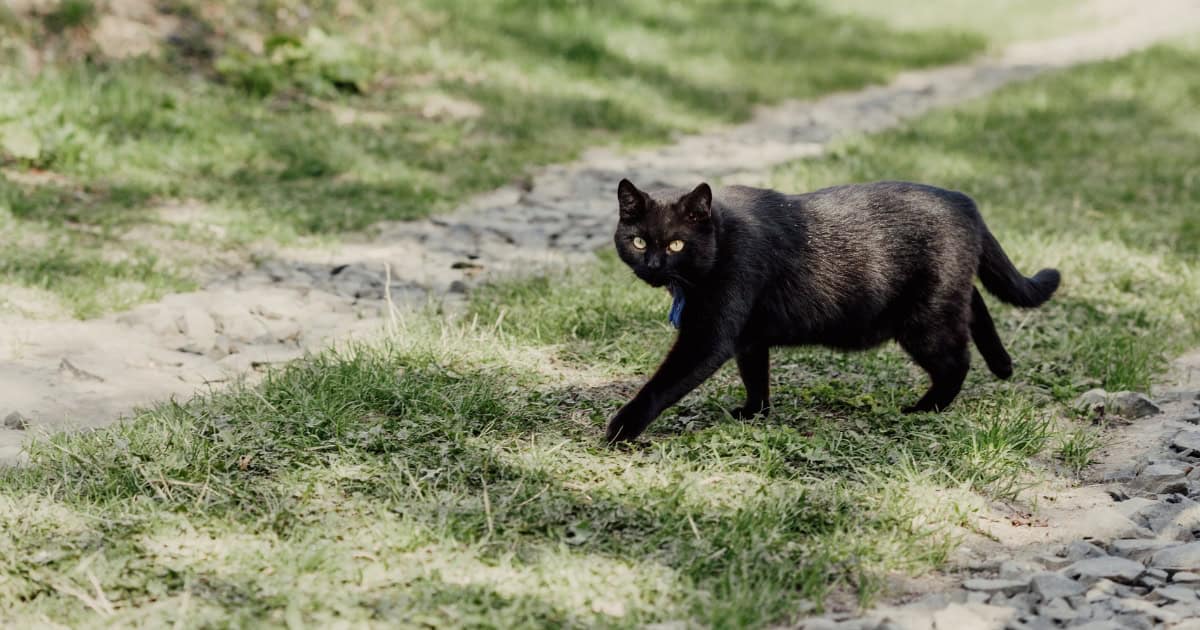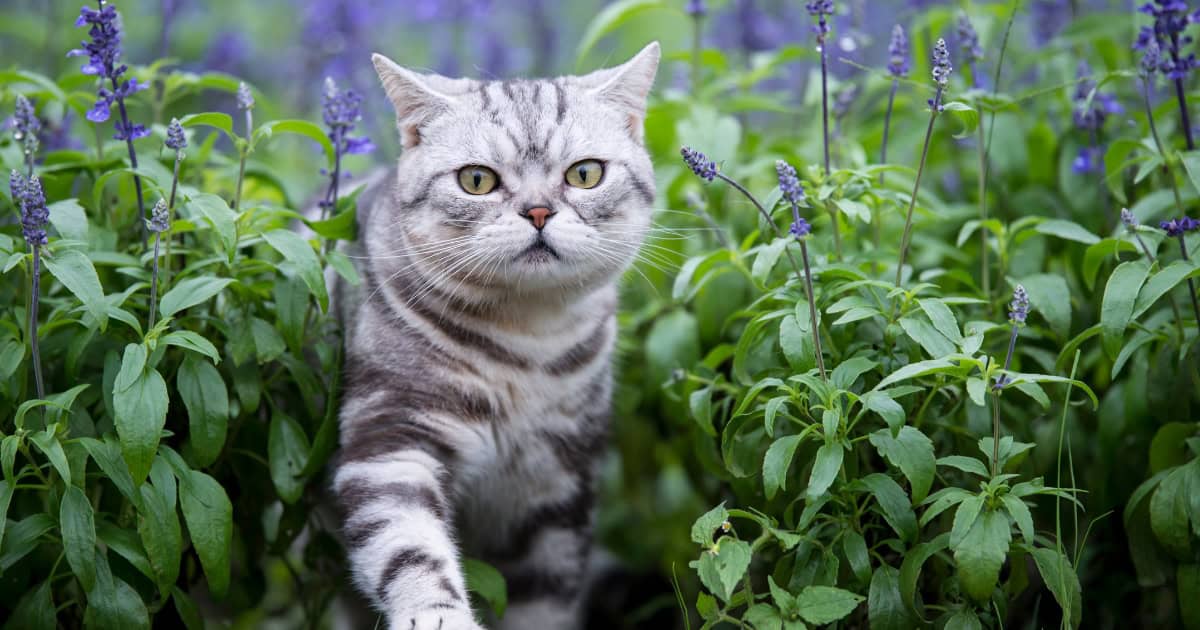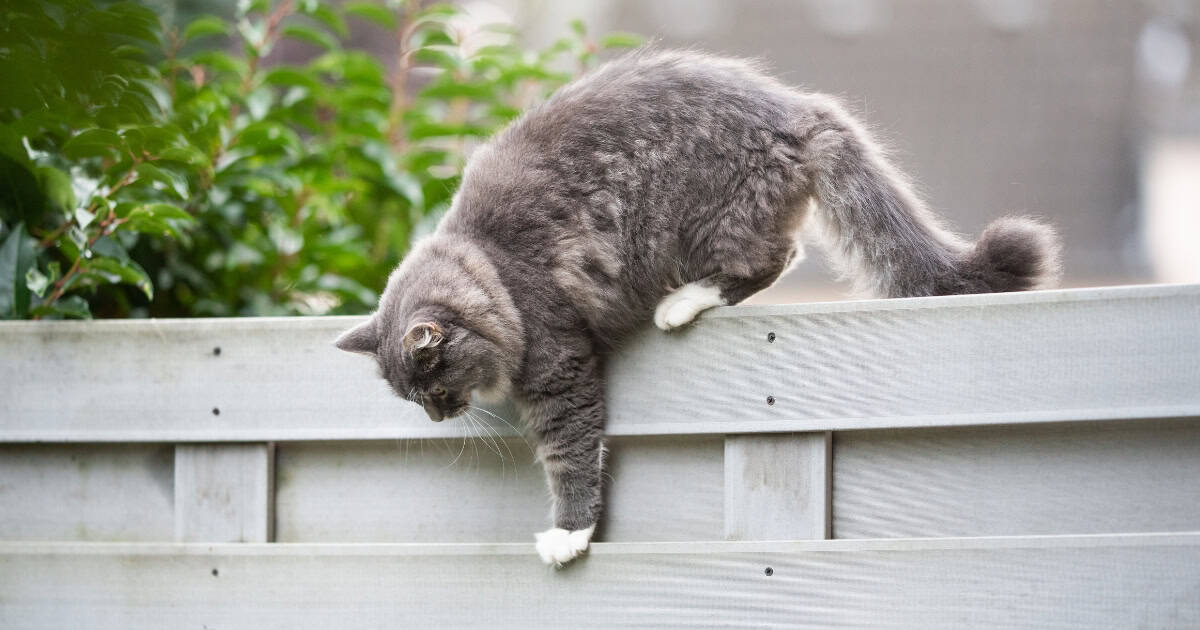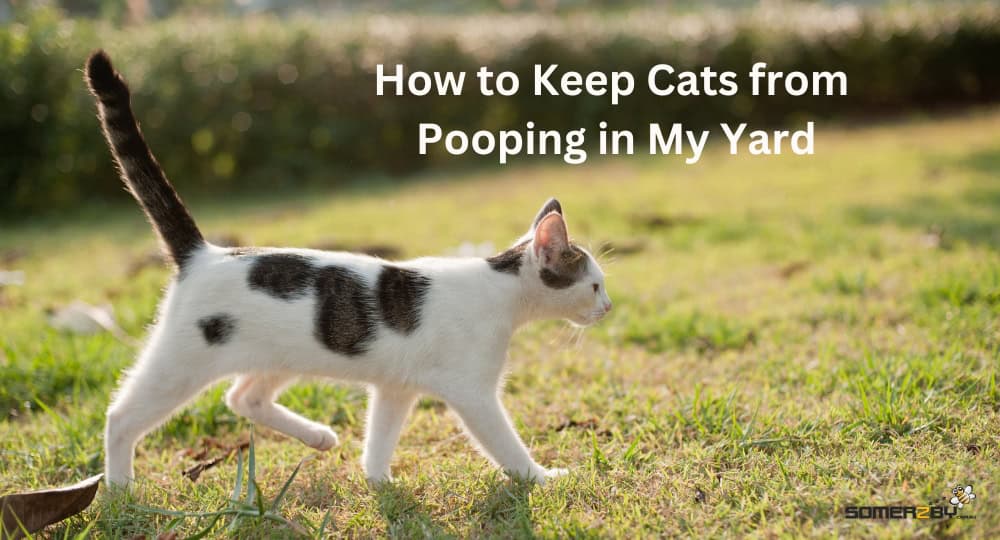Cats
How to Keep Cats from Pooing in My Yard
Join us as we unravel the mystery behind why your once-pristine garden has become a cat’s favoured restroom. Explore the allure of soft soil, the lack of alternatives, and the territorial marking that invites these feline intruders.
Discover effective solutions in “How to Keep Cats from Pooping in my Yard,” where we delve into commercial cat repellents, motion-activated sprinklers, and aromatic deterrents.
Your journey to a cat-friendly yard involves altering your landscape and navigating legal considerations, all while balancing wildlife protection.
Join us in the pursuit of a harmonious coexistence between humans and cats as we help those searching, “How to Keep Cats from Pooping in my Yard”.
Understanding the Feline Intrusion
If you’ve ever wondered why your lovely garden has become the personal litter box for local cats, you’re not alone. The first step to addressing this issue is understanding the reasons behind it.
The Allure of Soft Soil
You might notice that most cat visits happen in parts of your yard with soft soil or mulch. Cats prefer these areas because they’re easy to dig into and cover up afterwards – essential traits for any good litter tray.
Your plants may also play a part here; some plants attract cats due to their scent or texture. For example, catnip and valerian root are well-known feline favourites.
Lack of Suitable Alternatives
A lack of alternatives could be another reason behind the feline invasion on your lawn – especially if there aren’t many green spaces nearby where these neighbourhood moggies can do their business without getting disturbed by humans or dogs.
Territory Marking
Cats are territorial creatures. They mark their territory in various ways, one of which is through pooping. By doing so, they let other cats know that this space belongs to them.
By understanding these factors, you can start working on strategies to deter them from your yard effectively.

How to Keep Cats from Pooping in my Yard
If you’re finding it a bit of a struggle to keep cats from treating your yard as their personal loo, don’t worry. There are several effective deterrents that can help protect your garden.
Commercial Cat Repellents
The first line of defence is often commercial cat repellers. These motion activated cat scarers use scents that stray cats find unpleasant, deterring them from returning to the area.
You could also deter cats with electronic devices such as ultrasonic cat repellent. These emit unpleasant high-frequency sounds only audible to cats.
Motion-Activated Sprinklers
Sprinklers with motion detectors are another great deterrent as cats hate water! When the sprinkler detects motion it will spray water and give the cat intruder a fright.
You will need to ensure you have a hose or water source in the yard you are protecting.
Deterrent Scents for Cats
Scents play a pivotal role in how cats interact with their environment. There are certain smells that can help keep the feline intruders at bay. Consider planting plants cats dislike with strong aromas – think lavender, rosemary or citronella.
Discourage cats by leaving other strong scented items around the perimeter of your garden including citrus peels, cayenne pepper, white vinegar, coffee grounds, peppermint oil and other essential oils.

Remember, the goal isn’t to harm cats but rather gently persuade them to seek out other places for their business. Be sure that any alterations you make are non-poisonous for all creatures in your neighbourhood.
Modifying Your Yard’s Appeal
If your yard is the preferred toilet for local cats, it might be too appealing. Let’s make some changes to deter these feline visitors.
Change the Texture of the Soil
Cats love soft, diggable soil for their bathroom needs. One way to discourage this is by adding textures they dislike. For example, you can use sharp-edged mulch or decorative pebbles which are uncomfortable on their paws and may keep them away from certain areas in your garden.
Landscape Design Alterations
Felines often favour hiding spots in gardens when doing their business. Reducing possible hiding spaces can help stop them from visiting your yard regularly. Try removing dense shrubbery or garden furniture to minimise cat pooping.
Cover Plants
If cat poop is destroying your vegetable garden, create a barrier over the garden made from chicken wire. This is an affordable way to prevent cats from accessing certain areas of your garden but isn’t suitable for large areas.
To prevent cats pooping in your outdoor space, sprinkle orange peels and lemon peels around your perimeter. The smell is a natural cat deterrent!
Legal and Ethical Considerations
Cats are beloved pets, but they can become a nuisance when they choose your yard as their personal toilet. It’s important to handle this situation responsibly.
Respecting Animal Rights
Firstly, remember that cats have rights too. Any method used to deter them should not cause harm or distress. So no need for drastic measures like trapping or hurting your neighbour’s cats.
The law also protects our furry friends. In Australia, it’s prohibited by the Prevention of Cruelty to Animals Act to deliberately cause agony to an animal, which includes strays coming into your garden.
Talking with Neighbours
If you know who owns the cat causing trouble in your yard, it might be worth having a friendly chat with them about it. They may not even realise there’s an issue.
You could suggest alternatives such as indoor litter trays or outdoor enclosures like those from Somerzby. This approach shows respect for both cat ownership and community harmony.
Balancing Wildlife Protection
Australia has unique wildlife that often shares spaces with domestic animals. When trying to keep cats out of your yard, consider how changes will affect local fauna.
For instance, if you’re thinking about using ultrasonic deterrents, remember they can also distress native wildlife. Choose deterrents that are both cat and wildlife-friendly.

Evaluating the Effectiveness of Your Strategies
Once you’ve implemented your cat-deterrent strategies, it’s crucial to assess their effectiveness. Noticing fewer feline visitors or evidence of their presence can be a good sign that your efforts are working.
Taking Note of Changes in Cat Behaviour
To gauge success, pay attention to changes in local cats’ behaviour and frequency of visits. Fewer sightings could mean they’re finding less appeal in your yard as a bathroom spot.
If these unwanted guests continue showing up even after applying deterrents and making modifications around your property, it may indicate that more drastic action is needed.
You might need to reassess which methods you’re using or try new ones entirely.
The Importance of Patience
Bear in mind that changing animal behaviour takes time so don’t expect immediate results – some deterrence methods may take weeks before becoming fully effective. Cats are creatures of habit and breaking those habits won’t happen overnight.
In some cases where nothing seems successful at deterring cats pooping in your yard, seeking professional help like contacting Animal Welfare League Queensland (AWLQ) can provide guidance on dealing with stray or nuisance animals ethically and legally.
Note: The goal here is not only about keeping our yards clean but also promoting harmonious co-existence between humans and animals in our neighbourhoods.
So, always remember to approach this issue with patience and respect for animal welfare.
Toni’s Wrap
Addressing the issue of neighbourhood cats pooping in your yard requires a comprehensive understanding of feline behaviour so you can tailor your strategies accordingly.
Utilising commercial cat repellents, motion-activated sprinklers and deterrent scents, along with modifying your yard’s appeal, can significantly reduce unwanted feline visits.
It’s crucial to consider legal and ethical considerations, respecting animal rights and communicating with neighbours to maintain harmony.
Evaluating the effectiveness of your strategies and exercising patience are key components in achieving a clean and cat-friendly yard.
Remember, the goal is not only cleanliness but also promoting a harmonious coexistence between humans and animals in our neighbourhoods, making “how to keep cats from pooping in my yard” a challenge met with patience and respect for all creatures involved.




